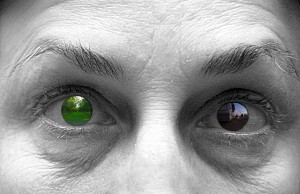
4GWAR, the nations counter terrorism, homeland security and new technologies blog recently did an article on Humintell’s Director, Dr. David Matsumoto and his speech at a Human Geography Conference outside of Washington D.C.
The article’s focus was on the “geography” of the human and that role in deception detection. Human geography is a multi-discipline study of not only the physical nature of the earth but the people who live on it and how they relate among themselves and with others along political, economic, cultural, linguistic, geographic lines.
Dr. Matsumoto pointed out in this conference as well as many times before that there are literally hundreds of studies that indicate the average individual (and sometimes even the improperly trained expert) can only detect real deception about 50% of the time.
“Bottom line: we’re no better [at it] than flipping a coin,” Matsumoto said. One good way to delve into a more in depth conversation with a witness or suspect is to ask the same types of questions in varying ways (referring to the event in question) and closely watch their facial expressions, more specifically their microexpressions.
This is very tricky and can take, even the expert, years to become proficient in such techniques. However, these microexpressions are only indicators that there could be more to the story than is being revealed not that there is concrete evidence of deception.
For instance, if your interrogating someone and say, “Were you at the victims house the night of the murder?” and they display a microexpression of fear followed by disgust, then there is probably more to the story then they are verbally revealing and that, that particular line of questioning should be explored more.
“There is no such thing as a Pinocchio response,” Matsumoto, founder and director of the Culture and Emotion Research Laboratory at San Francisco State, stated, “There’s no set of behaviors that reliably differentiate between who’s telling the truth and who isn’t.“
Typical Deception Myths to Avoid:
1. Liars avoid eye contact.
2. Deceivers look up and to the left or the right when they are telling a lie.
3. Liars scratch their nose often.
In a similar article on deception and new technologies, Biometric Update.com reveals the new wave in understanding a person’s emotional state.
Emotient, which specializes in facial expression analysis, and iMotions, an eye-tracking and biometric software platform company, have announced that Procter and Gamble, The United States Air Force and Yale University are its first customers for a newly integrated platform that combines facial expressions recognition and analysis, eye-tracking, EEG and GSR technologies.
This new technology is being designed for a variety of fields such as gaming, scientific, academic and marketing research.